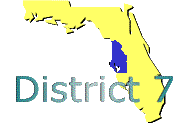| 1.0 | TRAVEL AND TRAFFIC MANAGEMENT |
| 1.10 | Highway-Rail Intersection |
| 1.10.3 | At all HRIs with active railroad warning systems, HRI shall manage the traffic in the intersection. |
| 1.10.3.1 | HRI shall be capable of augmenting the intersection with standard highway traffic signal devices. |
| 1.10.3.3 | HRI shall provide an Intelligent Intersection Controller (IIC) function to manage highway and rail traffic in the intersection. |
| 1.10.3.3.2 | IIC function shall control active railway warning devices, including flashing lights and physical barriers for highway and walkway lanes at HRIs. |
| 1.10.3.3.3 | IIC function shall provide an intersection surveillance system to derive the real-time status of traffic in the intersection. |
| 1.10.4 | HRI shall include a Standard Speed Rail (SSR) Subservice to manage highway and rail traffic at HRIs for rail lines with operational speeds less than 80 MPH. |
| 1.10.4.1 | SSR shall include active railroad warning systems at designated HRIs. |
| 1.10.5 | HRI shall provide a High Speed Rail (HSR) Subservice for HRIs on rail lines with operational speeds between 80 and 125 MPH. |
| 1.10.5.1 | HSR shall include active roadside message devices to provide highway closure information at HSR HRIs. |
| 1.10.5.2 | HSR shall provide special safety features to enhance safety. |
| 1.10.5.2.2 | HSR shall include a positive barrier function( e.g. four quadrant gates) to close the intersection to highway traffic for rail lines operating at speeds over 110 MPH. |
| 1.5.2 | TSI shall include an Information Access function that allows travelers to access the available information. |
| 1.5.2.5 | Information Access shall provide the capability for travelers to access the TSI information via any of, but not limited to, the following methods: |
| 1.5.2.5(a) | Highway advisory radio. |
| 1.6 | TRAFFIC CONTROL |
| 1.6.0 | ITS shall provide a Traffic Control capability. Traffic Control provides the capability to efficiently manage the movement of traffic on streets and highways. Four functions are provided which are (1) Traffic Flow Optimization, (2) Traffic Surveillance, (3) Control Function, and (4) Provide Information. This will also include control of network signal systems with eventual integration of freeway control. |
| 1.6.2 | Traffic Control shall include a Traffic Surveillance function. |
| 1.6.2.1 | Traffic Surveillance shall include a Vehicle Detection function with the capability of accurately detecting vehicles in a real-time fashion. |
| 1.6.2.1.1 | Vehicle Detection shall include the capability to determine those vehicles that are HOVs. |
| 1.6.2.2 | Traffic Surveillance shall include a Data Collect function to provide the capability to collect data that are needed for determining traffic flow and prediction. |
| 1.6.2.2.1 | Data Collect shall provide the capability to quickly feedback traffic data to the control processes. |
| 1.6.2.3 | Traffic Surveillance shall include an area wide surveillance capability to include several jurisdictions. |
| 1.6.2.3.1 | The area wide surveillance shall gather speed and flow information. |
| 1.6.2.4 | Traffic Control shall provide the capability to acquire detailed traffic measurements at specific locations. |
| 1.6.3 | Traffic Control shall include a Control Function. |
| 1.6.3.3 | The Device Control Function shall provide the capability to exercise control over those devices utilized for traffic control. |
| 1.6.3.3.1 | Device Control shall include the capability to control traffic signalization, including rapid modification of signalization parameters to respond to traffic requirements. |
| 1.6.3.3.2 | Device Control shall include the capability to control dynamically traffic signing. |
| 1.6.3.3.3 | Device Control shall include the capability to control freeway ramp metering. |
| 1.6.3.3.4 | Device Control shall include the capability to exercise dynamic control over the infrastructure (such as reversible-lanes, turning restrictions, etc.). |
| 1.6.3.4 | Device Control shall communicate control data to the following devices. |
| 1.6.3.4(a) | Traffic signals. |
| 1.6.3.4(b) | Ramp meters. |
| 1.6.3.4(c) | Information signs. |
| 1.7 | INCIDENT MANAGEMENT |
| 1.7.1 | Incident Management shall provide an incident identification function to identify incidents. |
| 1.7.1.1 | The incident identification function shall include the capability to identify predicted incidents. |
| 1.7.1.1.1 | The incident identification function shall use information from the following types of sources, where available, to identify predicted incidents: |
| 1.7.1.1.1(a) | Traffic flow sensors. |
| 1.8 | TRAVEL DEMAND MANAGEMENT |
| 1.8.0 | Travel Demand Management will generate and communicate management and control strategies that will support and facilitate the implementation of TDM programs, policies and regulations. It consists of two major functions which are (1) Increase Efficiency of Transportation System and (2) Provide Wide Variety of Mobility Options. |
| 1.8.3 | TDM shall include a sensors/control function. |
| 1.8.3.1 | The sensors/control function shall provide the capability to gather information needed for the generation of management and control strategies to include, but not be limited to the, following: |
| 1.8.3.1(b) | Usage levels. |
| | |




